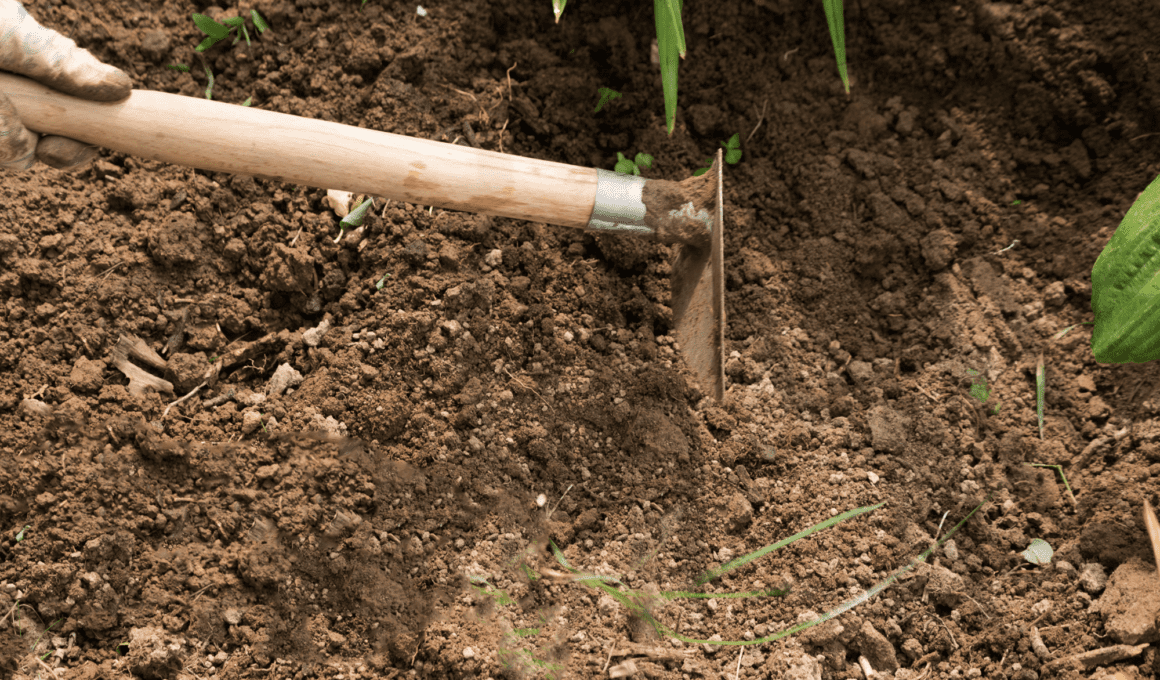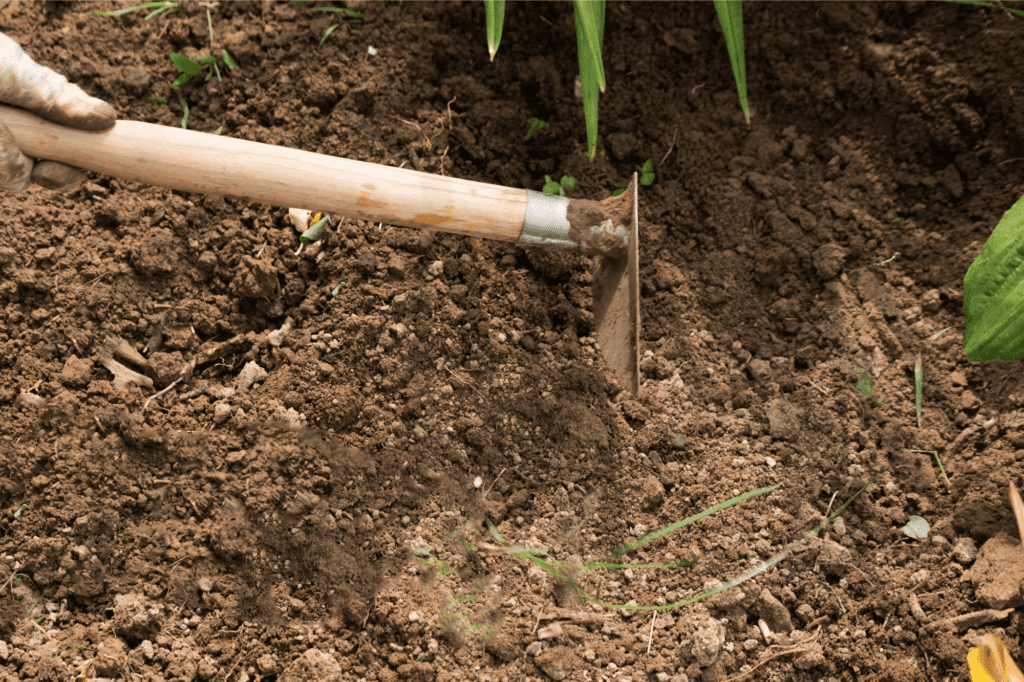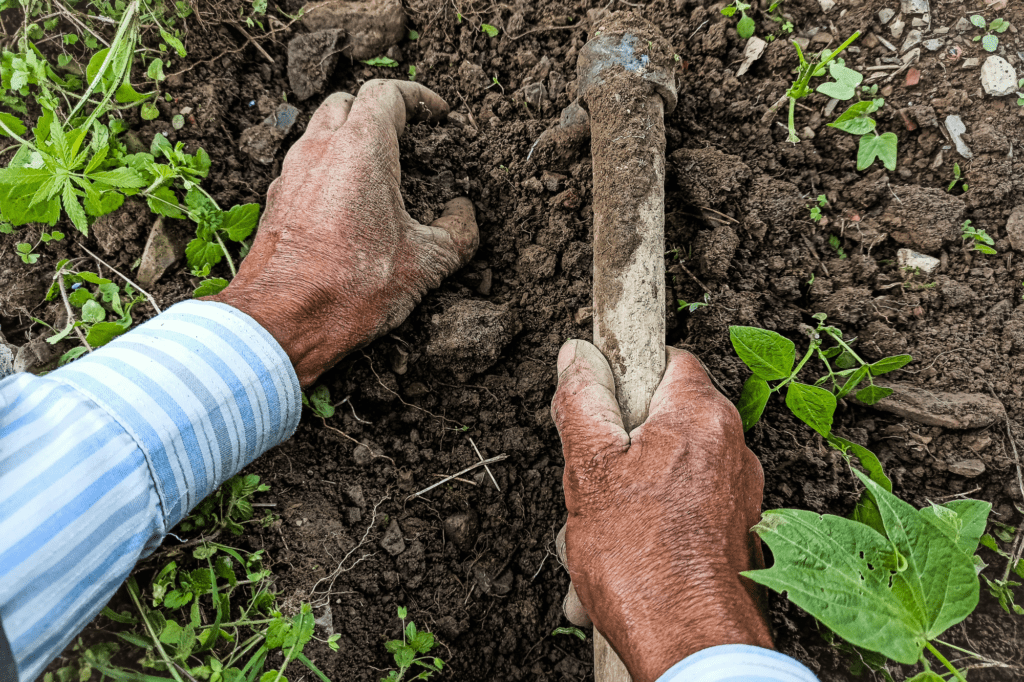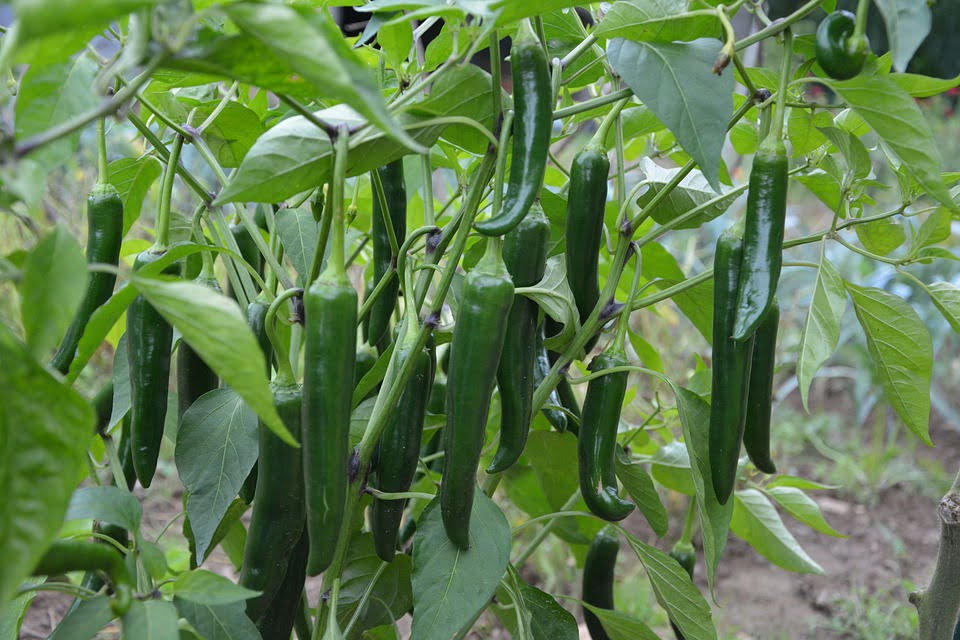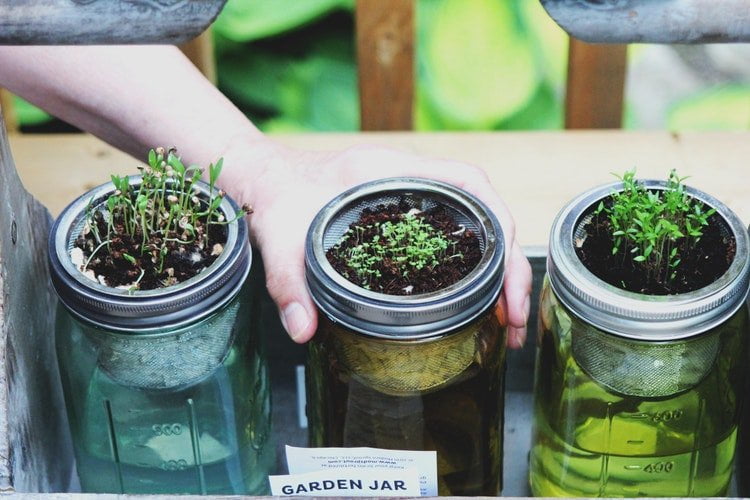Are you tired of dealing with rocks in your soil? Don’t worry, we’ve got you covered!
In this article, we will show you exactly how to remove rocks from your soil, ensuring a safe and productive gardening experience. Whether you’re preparing a new garden bed or simply want to improve the quality of your existing soil, these step-by-step instructions will help you get rid of those pesky rocks once and for all.
From assessing the size and quantity of rocks, to using hand tools and machinery, we’ll guide you through the process. We’ll also provide tips on improving drainage and replenishing the soil with nutrients and organic matter.
So get ready to roll up your sleeves and say goodbye to rocks in your soil!
Quick Summary
- Assess the size and quantity of rocks in the soil before deciding on a removal method
- Use hand tools like rakes or shovels for smaller rocks, and consider cost-effective solutions like rock rakes or hiring professionals for larger areas or heavy rocks
- Clear surface debris and vegetation before removing rocks, using methods like manually picking up rocks, using a rake or hoe, or using machinery like a tractor or backhoe
- Consider using chemical solutions to break down rocks as an alternative method, following safety precautions and manufacturer’s instructions
Assess the Size and Quantity of Rocks in Your Soil
You’ll need to take a good look at your soil and see just how many rocks of different sizes are scattered throughout. This step is crucial in order to determine the best approach for removing them. Safety should always be a top priority when dealing with rocks in your soil.
To start, assess the size and quantity of rocks by visually inspecting the soil. Look for large rocks that may pose a potential danger or hinder planting and gardening activities. If there are only a few rocks, you can manually remove them using gloves and a shovel. However, if the soil is filled with numerous rocks, you may need to consider cost-effective solutions or alternative methods.
One cost-effective solution is using a rock rake or a rock picker. These tools are designed to easily gather rocks by combing through the soil and collecting them in a pile. Another option is hiring a professional rock removal service, especially if you have a large area to cover or if the rocks are too heavy to handle on your own.
Alternatively, you can also try using a rock tumbler, which is a machine that continuously rotates rocks, gradually smoothing out their surfaces. This method can be time-consuming but is effective in removing smaller rocks from your soil.
Remember, no matter which method you choose, always prioritize safety and take necessary precautions to avoid injury.
Clear the Surface Debris and Vegetation
First, make sure to clear away any surface debris and vegetation before tackling the task at hand. This step is crucial for a safe and effective removal of rocks from your soil. Start by removing any loose leaves, twigs, or other debris that may be covering the surface. Use a rake or a broom to sweep away the smaller particles.
Next, trim any overgrown vegetation, such as weeds or grass, that may be obstructing your access to the rocks. Be cautious when using sharp tools and wear protective gloves to prevent any injuries.
Once the surface is clear, you can proceed to the next step of removing the rocks.
There are several clearing methods you can employ to efficiently remove rocks from your soil. One option is to manually pick up the rocks by hand and place them in a bucket or a wheelbarrow. This method works well for smaller rocks but may be time-consuming for larger ones.
Another method is to use a rake or a hoe to loosen the soil around the rocks, making it easier to lift them out. If you have a large number of rocks or if they are too heavy to lift manually, you can also consider using a tractor or a backhoe to remove them.
To prevent regrowth of vegetation in the cleared area, you can apply a layer of mulch or landscape fabric. This will help suppress weed growth and keep the surface clean for a longer period of time. Additionally, regularly inspect the area for any new growth and promptly remove any weeds or unwanted plants.
By following these clearing methods and taking preventive measures, you can successfully remove rocks from your soil and maintain a clean and healthy garden.
Use Hand Tools to Remove Small Rocks
Using hand tools, such as a trowel or a small shovel, can be an effective method for extracting smaller rocks from the ground. Here are three reasons why using hand tools for rock removal is a great choice:
- Safety: Hand tools allow for better control and precision, reducing the risk of injury compared to using larger machinery. You can carefully maneuver around delicate plants and avoid damaging your surrounding landscape.
- Cost-effective: Hand tools are an affordable alternative to renting or purchasing heavy machinery. They require minimal maintenance and can be reused for multiple projects, saving you money in the long run.
- Versatility: Hand tools offer more flexibility in accessing hard-to-reach areas. Their compact size allows you to navigate tight spaces, such as between shrubs or along garden borders, effectively removing rocks without causing unnecessary disturbance.
To remove rocks using hand tools, start by loosening the soil around the rock with the trowel or small shovel. Use gentle prying motions to lift the rock from beneath, taking care not to strain your back. If the rock is too large or firmly embedded, alternative methods for removal may be necessary, such as using a rock bar or enlisting the help of others. Remember to wear gloves and sturdy footwear for protection while using hand tools.
Screen the Soil to Separate Rocks
Once you’ve finished extracting those pesky little rocks, it’s time to get down and dirty with the next step: screening the soil to separate the unwanted debris. This is an essential part of the rock removal process, as it ensures that your soil is free from any rocks or large debris that may hinder plant growth or cause damage to your gardening tools.
To screen the soil effectively, you can use a simple sieve technique. This involves using a mesh screen with small holes to separate the rocks from the soil. Here’s how you can do it:
- Start by placing the mesh screen over a wheelbarrow or a large container. Make sure the container is stable and won’t tip over during the process.
- Take a shovel or a trowel and scoop a small amount of soil onto the screen.
- Gently shake the screen back and forth, allowing the soil to pass through the mesh while the rocks and debris remain on top.
- Use your hands or a brush to remove the rocks and debris from the screen. Dispose of them properly, away from the gardening area.
Repeat this process until you have screened all of the soil. Remember to take breaks and pace yourself to avoid any strain or injuries. Safety should always be a priority when undertaking any gardening task.
By using the sieve technique, you can effectively remove rocks from your soil, leaving it clean and ready for planting. Happy gardening!
Utilize Machinery for Larger Rocks
Don’t let large rocks deter you from achieving your dream garden – with the help of machinery, you can easily tackle these obstacles and create a beautiful landscape. Here are four benefits of utilizing machinery for removing larger rocks from your soil:
- Efficiency: Machinery such as excavators or loaders can quickly and effortlessly remove large rocks, saving you time and energy. This allows you to focus on other aspects of your garden.
- Precision: With the use of machinery, you can choose the exact location where you want to remove the rocks. This helps in creating a well-planned layout for your garden and ensures that no damage is done to surrounding plants or structures.
- Safety precautions: When operating machinery, it’s crucial to prioritize safety. Make sure to wear protective gear such as gloves, safety goggles, and sturdy footwear. Always read and follow the manufacturer’s instructions for safe operation.
- Versatility: Machinery offers various attachments and tools that can handle different rock sizes and types. From rock buckets to hydraulic hammers, you have a range of options to suit your specific needs.
Remember, safety should always be your top priority when using machinery. By following the necessary precautions and using the right equipment, you can remove large rocks from your soil safely and efficiently, paving the way for a stunning garden.
Implement Chemical Solutions to Break Down Rocks
Now that you’ve learned about utilizing machinery to remove larger rocks from your soil, let’s explore another effective method to tackle this issue. By implementing chemical solutions to break down rocks, you can save time and effort while ensuring your safety. Chemical alternatives for rock decomposition offer a convenient and efficient way to deal with stubborn rocks that are deeply embedded in the soil.
To give you a clear understanding of the various chemical options available, here is a helpful table:
| Chemical Solution | Application Method | Safety Precautions |
|---|---|---|
| Commercial rock dissolvers | Spraying or pouring directly on rocks | Wear protective gloves and goggles to avoid contact with the skin and eyes. Follow the manufacturer’s instructions carefully. |
| Organic acid solutions | Diluting and applying with a sprayer or watering can | Use in a well-ventilated area and avoid inhalation. Wear protective clothing and gloves. Keep away from children and pets. |
| Natural enzymatic rock decomposers | Mixing with water and applying to rocks | Avoid contact with eyes and skin. Use gloves and protective clothing. Store in a cool, dry place away from direct sunlight. |
By incorporating these chemical solutions into your rock removal process, you can effectively break down and remove rocks from your soil. Remember to prioritize safety by following the recommended precautions for each chemical alternative.
Improve Drainage to Prevent Rock Formation
To enhance the health of your garden, you can take steps to improve drainage and prevent the formation of troublesome rocks. One way to achieve this is by preventing erosion. Erosion can cause soil to wash away, leaving behind rocks and making it difficult for plants to grow.
To prevent erosion, you can create swales or berms, which are small ridges or channels that help redirect water flow and prevent it from washing away your soil. Additionally, using cover crops can also help improve drainage and prevent rock formation. Cover crops, such as clover or rye grass, can help hold the soil in place, reducing the risk of erosion.
These plants have extensive root systems that help break up compacted soil, allowing water to penetrate more easily and preventing the formation of rocks. By incorporating these techniques into your gardening routine, you can create a safer environment for your plants and prevent the hassle of dealing with rocks in your soil.
Replenish the Soil with Nutrients and Organic Matter
You can greatly enhance the health and fertility of your garden by replenishing the soil with a rich abundance of nutrients and organic matter. This is a crucial step in removing rocks from the soil and ensuring optimal plant growth.
Adding organic matter, such as compost or well-rotted manure, provides numerous benefits for your soil. Firstly, organic matter replenishes soil fertility by increasing the availability of essential nutrients. It acts as a natural fertilizer, slowly releasing nutrients into the soil as it decomposes. This helps to nourish your plants and promote healthy growth.
Additionally, organic matter improves the soil structure, allowing for better water drainage and root penetration. Furthermore, incorporating organic matter into the soil helps to enhance its moisture-holding capacity. This is particularly important in preventing rock formation, as excessive moisture can cause soil particles to bind together and form clumps. By improving the soil’s ability to retain water, organic matter reduces the risk of rocks accumulating and hindering plant growth.
Replenishing the soil with nutrients and organic matter is essential for removing rocks from the soil and ensuring the health and fertility of your garden. By incorporating organic matter, you can replenish soil fertility, improve soil structure, and enhance moisture retention.
Take the necessary steps to provide your plants with the ideal growing conditions and enjoy a thriving garden.
Frequently Asked Questions
What are some common signs that indicate the presence of rocks in the soil?
To identify rocks in soil, look for common signs of rocky soil such as irregular terrain, exposed rocks, or difficulty in digging. These indicators can help you ensure safety when working with the soil.
How deep should I clear the surface debris and vegetation before removing rocks?
To prepare soil for planting, it’s important to clear the surface debris and vegetation. Best practices for rock removal from soil include clearing a depth of at least 6 inches to ensure a safe and rock-free planting area.
Are there any specific hand tools that are more effective in removing small rocks?
To remove small rocks from soil, there are several hand tools that are effective. A hand rake or a shovel with a narrow blade can help loosen and lift the rocks safely.
What should I do with the rocks that are separated from the soil after screening?
For recycling options, you can check if your local waste management facility accepts rocks. To repurpose the rocks, consider using them for landscaping, creating pathways, or building decorative features. Always prioritize safety when handling rocks.
Can I use chemical solutions to remove rocks from my soil if I have plants already growing in it?
To remove rocks from soil with existing plants, it’s not recommended to use chemical solutions. They may harm your plants and pose safety concerns. It’s better to manually remove the rocks to ensure the safety of your plants.
Conclusion
In conclusion, removing rocks from your soil can be a challenging task, but with the right techniques and tools, it can be accomplished effectively.
By assessing the size and quantity of rocks, clearing surface debris, and utilizing hand tools or machinery, you can eliminate rocks from your soil.
Implementing chemical solutions and improving drainage can also help prevent rock formation in the future.
Finally, replenishing the soil with nutrients and organic matter will ensure healthy and fertile soil for your plants to thrive.
So get started and enjoy your rock-free soil!





